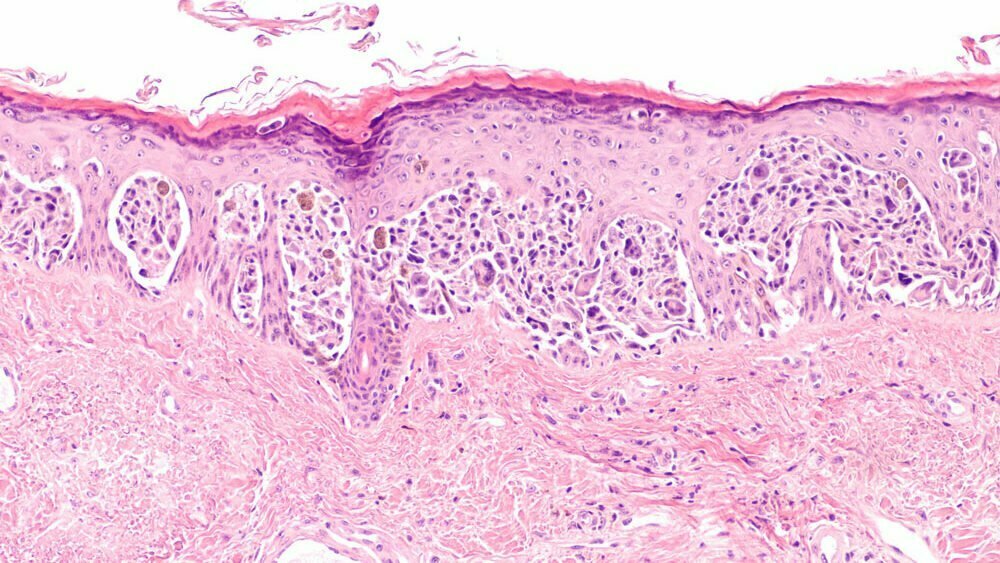The third publication utilizing SCARD (and part of 3 papers by the same research team) was in August 2021 with the Australasian Journal of Dermatology in a paper called “Characteristics of 637 melanomas documented by 27 general practitioners on the Skin Cancer Audit Research Database.”
Authors
Clara Jimenez Balcells, Jeremy Hay, Jeff Keir, Nikita Rosendahl, Martelle Coetzer-Botha, Tobias Wilson, Simon Clark, Astrid Baade, Cath Becker, Luke Bookallil, Chris Clifopoulos, Tony Dicker, Martin Paul Denby, Douglas Duthie, Charles Elliott, Paul Fishburn, Mark Foley, Mark Franck, Irene Giam, Patricio Gordillo, Alister Lilleyman, Roger Macauley, James Maher, Ewen McPhee, Michael Reid, Bob Shirlaw, Graeme Siggs, Robert Spark, John Stretch, Keith van den Heever, Thinus van Rensburg, Chris Watson, Harald Kittler, Cliff Rosendahl
ABSTRACT
Background and Objective
Most melanomas (including melanomas in situ), in Australasia, are treated by general practitioners (GPs). Previously undescribed, the characteristics of a series of melanomas treated by multiple GPs are examined.
Patients and Methods
Six hundred and thirty-seven melanomas treated by 27 Australasian GPs during 2013 and documented on the Skin Cancer Audit Research Database (SCARD) were analysed by anatomical site, subtype, Breslow thickness, diameter, associated naevi and linked adverse outcomes.
Results
Most melanomas (59.7%) were on males, mean age at diagnosis being 62.7 years (range 18–96). Most (65.0%) were in situ, with a high incidence of lentiginous melanoma (LM) (38.8%) and 32% were naevus associated. Most LM (86.4%) were in situ, compared to 55% of superficial spreading melanoma (SSM) (P < 0.0001). There was male predominance on the head, neck and trunk and female predominance on extremities. There was no significant association between Breslow thickness and diameter, with small melanomas as likely to be thick as large melanomas, and melanomas ≤3 mm diameter, on average, more likely to be invasive than larger melanomas. There was a positive correlation between age and both melanoma diameter and Breslow thickness. Seven cases progressed to melanoma-specific death: Five nodular melanoma (NM) and two SSM, one of which was thin (Breslow thickness 0.5 mm).
Conclusions
A large series of melanomas treated by Australasian GPs were predominantly in situ, with a high proportion of LM subtype. With implications for GP training, NM linked to death was over-represented and there was a novel finding that older patients had larger diameter melanomas.
Dermatoscopy has undoubtedly advanced the diagnostic accuracy of pigmented and non-pigmented skin lesions. Pattern analysis is the most powerful of current methods for dermatoscopic diagnosis, but it does present significant challenges to the learning dermatoscopist.
We present here an algorithmic method, derived from pattern analysis, based on logical analysis of simply defined geometric features. We consider this presents fewer barriers to the beginner, but retains sufficient power for the most experienced user. Most importantly, it provides a better framework for elevating experience beyond mere anecdotes, allowing the experience to lead to true expertise.
https://pubmed.ncbi.nlm.nih.gov/34423846/
Jimenez Balcells C, Hay J, Keir J, Rosendahl N, Coetzer-Botha M, Wilson T, Clark S, Baade A, Becker C, Bookallil L, Clifopoulos C, Dicker T, Denby MP, Duthie D, Elliott C, Fishburn P, Foley M, Franck M, Giam I, Gordillo P, Lilleyman A, Macauley R, Maher J, McPhee E, Reid M, Shirlaw B, Siggs G, Spark R, Stretch J, van den Heever K, van Rensburg T, Watson C, Kittler H, Rosendahl C. Characteristics of 637 melanomas documented by 27 general practitioners on the Skin Cancer Audit Research Database. Australas J Dermatol. 2021 Nov;62(4):496-503. doi: 10.1111/ajd.13705. Epub 2021 Aug 23. PMID: 34423846.

Melanoma in Australasia
Melanoma is the deadliest form of skin cancer, and it is particularly prevalent in Australasia due to the high levels of sun exposure in the region. In Australia, melanoma is the third most commonly diagnosed cancer, accounting for most skin cancer deaths. However, the good news is that melanoma can be successfully treated if it is caught early. That’s why regular skin checks and early detection are crucial.
In Australia, most melanomas, including melanomas in situ (the earliest stage of melanoma), are treated by general practitioners (GPs). GPs are often the first point of contact for patients concerned about a suspicious skin lesion. They are trained to recognize the signs of skin cancer and can perform a thorough skin examination to determine if further testing or treatment is necessary.







